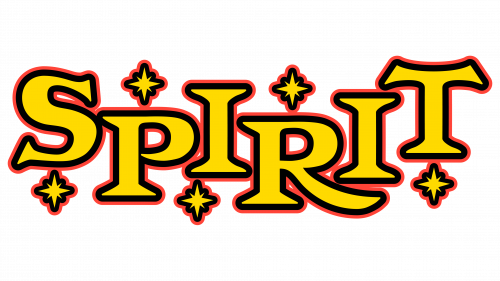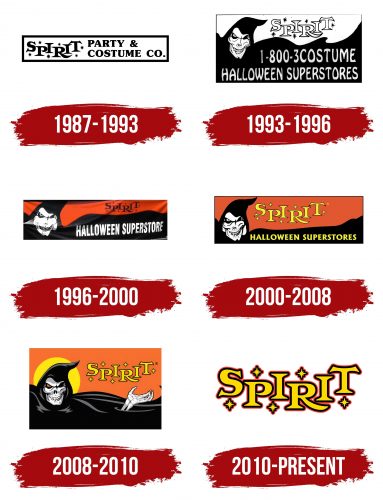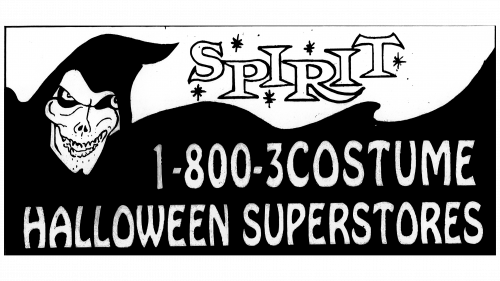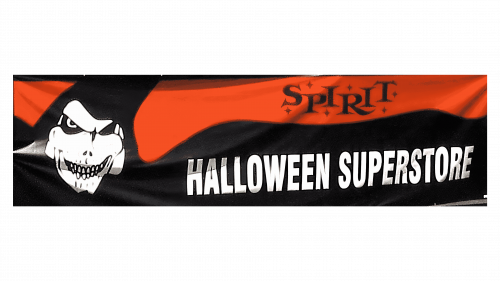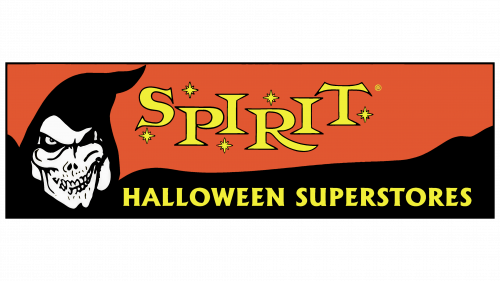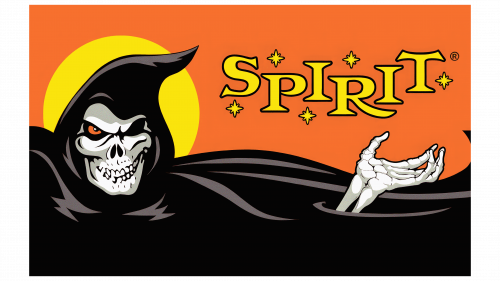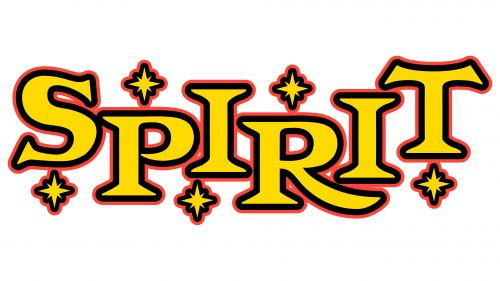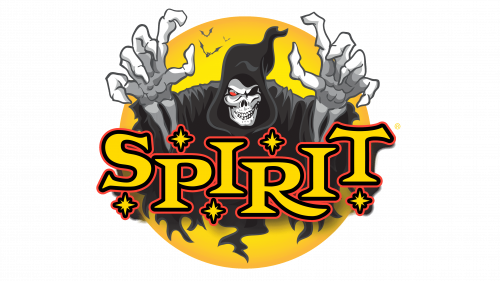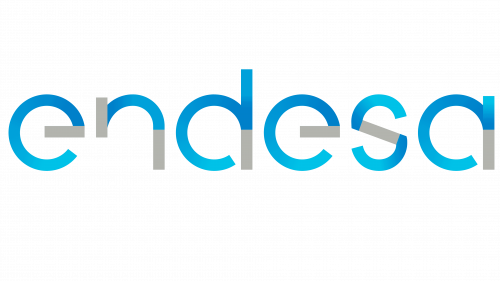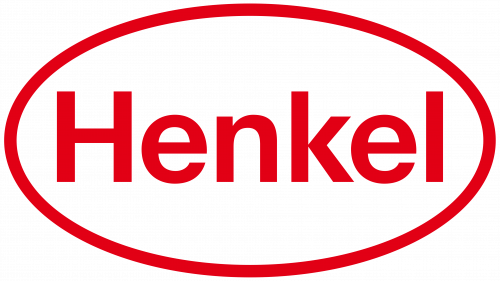The Spirit Halloween logo represents one of the world’s most beloved holidays and a creative approach to costume selection. Despite the spooky theme, the emblem does not create an oppressive impression because it is bright and shiny.
Spirit Halloween: Brand overview
Spirit Halloween’s history started in 1983 when businessman Joseph Marver established the organization in New Jersey. It began as a small seasonal shop selling Halloween costumes and accessories. Marver saw opportunities to open a specialty store that would only be open for a few weeks before Halloween, recognizing the holiday’s growing popularity in the US.
The first store opened in a New Jersey mall. It featured many Christmas decorations, masks, cosmetics, and costumes. The concept was unique because the store operated only during Halloween, typically from late August to early November.
The company gradually expanded throughout the 1980s, adding new seasonal locations in other New Jersey communities and nearby states. This temporary store business model allowed the enterprise to reduce costs associated with staffing and rent for most of the year.
Significant expansion occurred during the 1990s, as the business started branching out from New Jersey, opening locations in other US states. Marver and his team devised a successful strategy for selecting pop-up shop sites, often leasing empty spaces in malls and on city thoroughfares.
A pivotal moment happened in 1999 when Spencer Gifts, LLC, a well-known supplier of novelty items and gifts, purchased the company. This acquisition provided access to more resources and retail expertise, facilitating further expansion.
In the early 2000s, the retail network experienced remarkable growth, with more than 200 stores open by 2003. An online site launched in 2006, allowing the sale of products year-round and reaching a broader audience than physical stores alone. The internet platform also offered a more extensive product range.
Establishing the 1000th location in 2010 reached a significant milestone, demonstrating the business model’s efficacy and the company’s scalability.
The company started its Canadian expansion in 2011, opening its first locations in several provinces. This move aimed to make the brand a market leader in Halloween items in North America and pursue international expansion.
The charitable initiative Spirit of Children was introduced in 2013. It supports children’s hospitals and rehabilitation facilities across North America. The project involves collecting store donations and planning holiday parties for hospitalized children.
In 2015, the product lineup was expanded to include licensed costumes and accessories from popular films, TV series, and video games. This decision helped grow the customer base and solidify the brand’s position as the top seller of Halloween merchandise.
The company saw technological advancements in 2018, incorporating interactive displays and virtual fitting rooms to enhance the in-store shopping experience.
By 2020, the store network expanded to over 1,400 locations in North America, solidifying its position as the region’s biggest chain of specialist Halloween retailers.
The company continued growing its market share in 2021 despite challenging economic circumstances, breaking records with more than 1,400 temporary outlets throughout the United States and Canada. This growth was driven by the increased demand for holiday merchandise and costumes as people eagerly celebrated Halloween following the previous year’s limitations.
In 2022, the firm announced a substantial increase in its product line, including a new collection of special costumes based on well-known films and TV series. The firm also enhanced its e-commerce site and expanded shipping options to boost its online presence.
In 2023, the company took a big step toward sustainability by starting a campaign to produce costumes and decorations with more environmentally friendly materials. A recycling program for used costumes was also launched, allowing consumers to trade them in for savings on new purchases.
Significant technological advancements were achieved in 2024, with an augmented reality system that allowed customers to visually “try on” costumes before purchasing. This technology significantly improved the shopping experience while reducing the number of returns.
The business maintained its position as the top Halloween retailer in North America by adapting to shifting consumer demands and market realities.
Meaning and History
What is Spirit Halloween?
It is a chain of seasonal retail stores in the United States and Canada that sells Halloween costumes, decorations, props, and accessories. The stores typically open in late summer and operate throughout Halloween, occupying temporary locations in vacant retail spaces. The brand offers various merchandise for all ages, including costumes for children, adults, and pets, themed decorations, and party supplies. The company is known for its extensive assortment, creative displays, and exciting shopping experience. It provides customers with everything they need to celebrate Halloween in style.
1987 – 1993
Humor comes in many forms, including dark humor, which is why Halloween is so popular worldwide. An American party organization company has capitalized on this by choosing an emblem in a fitting style. The logo resembles a classic badge, typically used to mark products or serve as an informational plaque.
The base of the Spirit Halloween logo is a horizontal rectangle. It’s long to accommodate the company name and additional information so potential customers immediately understand what the company offers. The logo serves three functions:
- Informational (introducing the brand, its products, and services)
- Promotional (advertising the costume manufacturer)
- Marketing (labeling products with a common tag)
The rectangle’s frame is thin, even, and black – matching the color of the text inside. This color perfectly fits the horror theme, being classic for spooky costumes and other Halloween accessories. Even the stars, which appear as if from fireworks, are drawn in black. They adorn the right half of the geometric figure, surrounding the name written in an elegant font with spiky serifs.
The letters are large, bold, and capitalized, enhancing the festive atmosphere. Although they are in a single line, they are scattered chaotically, creating a playful mood. This suggests that the products are meant for fun and friendly pranks.
The right side of the rectangle features a two-tier inscription that promotes the company – “Party&Costume Co.” This part is in a different font – smaller in size but with wide letters that appear compressed from the top and bottom. The spacing between characters is larger, and the serifs are smaller. The glyphs have a balanced mix of rounded lines and straight angles, making the text look orderly and well-balanced.
1993 – 1996
The transformations gave the Spirit Halloween logo a radically different look: thus began the era of the white skull in a black billowing cloak. Notably, it is not a complete skull, as it resembles a face due to its:
- expressive features;
- eyes in black sockets;
- protruding cheekbones;
- smiling lips.
The creature grins cunningly, looking straight ahead and inviting others to join in. The emblem hints at pranks and joy. The mask against the black background encourages fun rather than sorrow, which is why the skull has an inviting smile. It winks, setting a playful tone and inviting people to buy matching holiday accessories.
The skull stands out clearly against the dark background, which takes the shape of a large cloak billowing in the wind. Such attire is typical of the Grim Reaper, but in this case, the cloak does not allude to death – it represents a ghost costume. On the right side is information about where it can be purchased: “Halloween Superstores.” The text is rendered in a bold, shaky font that suits the theme.
The company name occupies a prominent place at the top, strikingly positioned on a white background. It is written in an outlined uppercase font. The letters are still irregular in height and placement. The only change made by the designers is to the letter “T”: its horizontal stroke now resembles the spread wings of a bat. Small black stars flicker around the letters.
1996 – 2000
This Spirit Halloween logo has more energy than the previous one, even though they are identical in shape and content. The increased dynamism was achieved through several innovations that transformed an ordinary static sign into an expressive, dynamic symbol. The designers achieved this effect by:
- Adding color;
- Using deep shadows;
- Properly distributing highlights;
- Making the black color less saturated;
- Making the right eye appear to wink;
- Creating a draping effect;
- Lightening the stripes on the skull;
- Increasing the contrast of the text.
The top of the hood is not included in the logo—it is slightly cropped to focus entirely on the white ghost face. The logo now has less malice and more mischief. The sarcastic smile is emphasized by high cheekbones, which benefits the company that produces Halloween products, as their merchandise is intended for fun and pranks.
The text on the black cloak on the right has taken on a new shape: a long uppercase font was chosen. Due to the high density of extra-bold glyphs, the intra-letter spaces are small, but the white words still stand out clearly against the dark background. They are expressive, smooth, and even.
This time, the emblem mainly consists of a red and black palette, which breaks the monochrome and adds a touch of drama. The multicolored image works like a magnet because it features specific symbolism enhanced by a bloody background. This adds a note of professionalism to the horror theme and helps draw attention to the word “Spirit.”
2000 – 2008
The sign now features even more color: red and yellow have been added to the black and white. They balance each other well because, from a psychological perspective:
- Yellow and red maintain high emotional tension and signify the exploration of new areas, expressing joy, warmth, and radiance;
- Black and yellow signify disruption and willful decisions, as well as spontaneity and the desire to attract attention;
- White and yellow represent the opposite: a striving for spiritual enlightenment, calmness, clarity, and peace;
- Red and black emphasize an excessive dramatization of reality and the exaggeration of emotions.
This means the Spirit Halloween logo precisely reflects the concept of a manufacturer and distributor of fun products for creating “horrors.” It keeps you on edge while highlighting the hyperbolic nature of its products. This is hinted at by the intensified grin on the skull’s face, which seems to challenge customers: will you dare to buy or not?
The font in the top inscription has completely retained its festive style with jumping glyphs arranged at different heights and bright, sparkling stars, the number of which has decreased from six to five. They are harmoniously distributed among the yellow letters with black outlines, making them look appropriate. The lower line is set in a roughly similar font style with miniature sharp serifs. The only difference is that the letters lack outlines and are aligned in a straight row at the same height.
2008 – 2010
The Spirit Halloween emblem has gained a lot of depth, turning it into a realistic sign. Several new elements add liveliness and dynamism, with the hood being the most prominent. It is depicted fully and covers the skull’s forehead, stopping short of the empty eye socket on the right, which now looks like an occluder – an eye patch. The other eye is painted red, signifying heightened irritation and aggression. However, the cute smile softens the unfriendly impression, inviting people to have fun. The skull’s upper jaw is convex, giving the impression of a real smile.
The logo has been diversified with the addition of a full moon behind the ghost in black robes. It is depicted as a semi-circle of a rich golden hue, symbolizing generosity, abundance, wealth, strength, and justice. This makes it a perfect complement to Halloween, as the traditional “Trick or Treat” implies a variety of goodies that one can buy to appease persistent evil spirits. It means spending a lot of money on sweets.
Another significant addition to the emblem is a skeletal hand peeking out from the cloak. As befits a skeleton, it is painted white, contrasting perfectly with the black. The cloak has wavy silvery stripes and moonlit highlights. The ghost’s gesture is inviting, beckoning customers to buy appropriate products from Spirit Halloween.
The wordmark is also present and placed on an orange background, most fitting for the “spooky” autumn holiday. The orange and black palette is the most traditional for Halloween, as it is the color of jack-o’-lanterns glowing in the night. The yellow letters are perceived as the flame of candles peeking through the pumpkin’s cuts. The bright, pointed stars hint at this as well.
The name is written in a proprietary font with pointed letters. The glyphs look like spikes sticking out in different directions, enhancing the fright effect. The bold capital letters are still jumping, making the emblem relaxed, fun, and friendly despite the theme of awakening evil. The bold, distinctive typeface creates an impression of the company’s professionalism, demonstrating its confidence and stability.
2010 – today
Minimalist style in branding has not bypassed the Spirit Halloween logo; it has lost all the fancy elements that made it memorable. Only one detail remains – the wordmark in the signature design. Its distinctive feature is a unique font characterized by:
- Blockiness and solidity;
- Festivity and joy;
- Brightness and contrast.
The solidity is expressed through large letters positioned at different levels, which create a relaxed atmosphere. This makes them appear to bounce, conveying a sense of childlike excitement because Halloween is eagerly anticipated by children who go house to house in groups to get candy.
The festive mood is manifested in the decorative shape of the glyphs and the surrounding stars, reminiscent of fireworks or confetti. The large and expressive letters have an original look: they are not standard print characters but drawn elements, each with its personality. Some are soft due to rounding (“S,” “P,” “R”), others are intimidating (“T” resembles bat wings), and some are neutral (“I”).
Brightness is evident in the palette, which includes gold, red, and black. The largest area is given to yellow – the color of autumn, stars, the moon, and night lanterns. The entire inscription is painted in this color. The other colors harmoniously emphasize its exclusivity: they frame all the elements with neat, thin lines, highlighting the texture. The rich colors create high contrast, conveying peak joy and making the name easily distinguishable on all types of displays.
The glyphs and stars touch due to the double outline and small spacing between characters. At the same time, they do not merge, maintaining the optimal readability of the name. The high color contrast also contributes to the good clarity of the text, even with small intra-letter spacing. Such a logo is significant for a brand that produces and sells Halloween paraphernalia because it attracts rather than repels customers thanks to its festive design.
